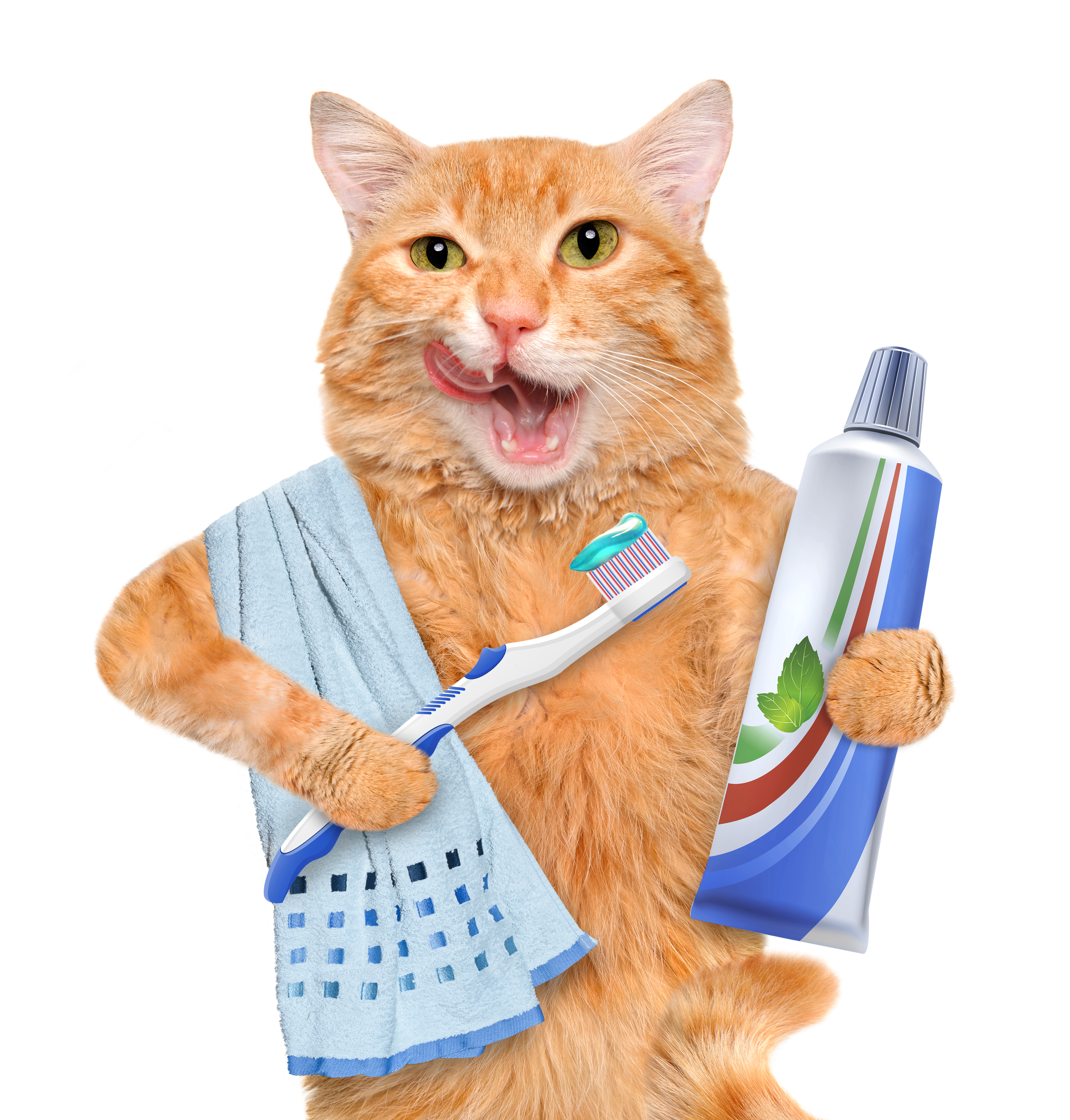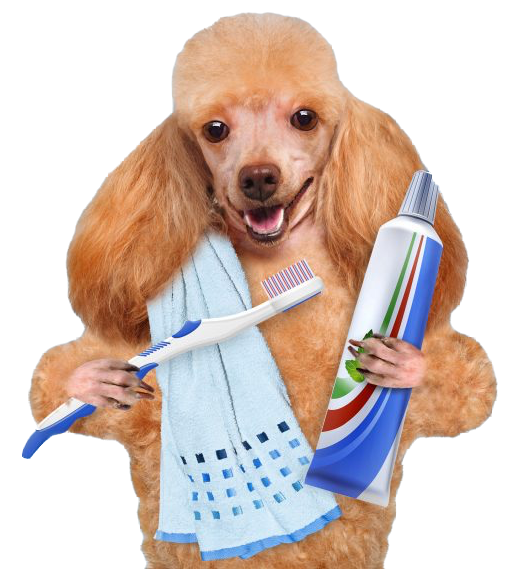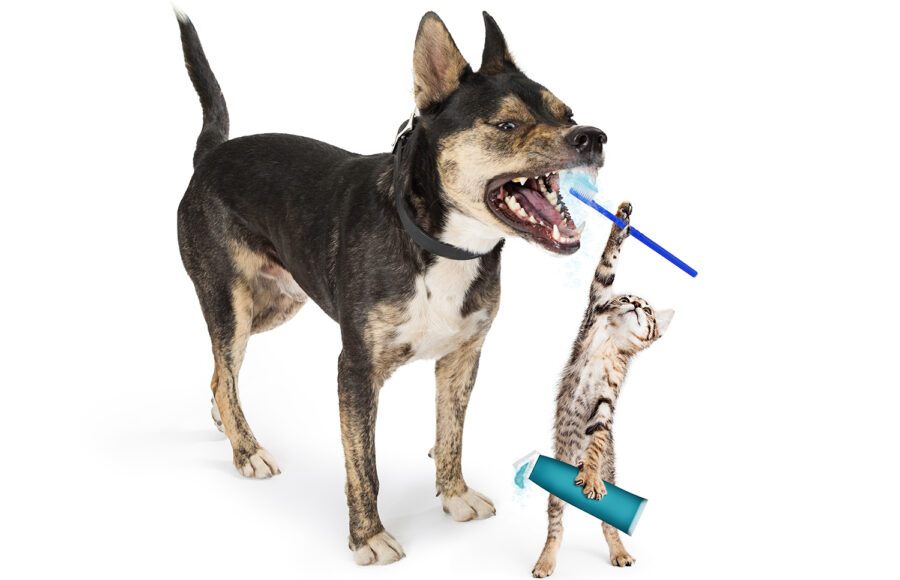
Dentistry Services
We schedule dental procedures on Mondays, Wednesdays, and Thursdays. The appointment is not solely based on availability, as it is also scheduled according to which doctor examined your pet for the initial dental examination. The attending doctor needs to be present on the day of the procedure itself.
Pre-requisites – What is Needed Before a Dental?

- A pre-dental examination. Even if your pet has had an up-to-date annual examination; the attending doctor is required to give the approval for dental procedure.
- Blood work is required, and is part of the dental package. You can choose to have the bloodwork done at the time of the pre-dental examination, or return at a closer date before the dental procedure itself.
- All bloodwork is sent out to a laboratory for testing, and pets need to have it done at least one day before the dental. The test is charged at the time of service, and the price is deducted from the dental package total. If you chose to forego bloodwork ahead of time, and have it done the day of the procedure, then the cost will be higher for the testing.
- All dogs are required to be up-to-date on their DA2PP, Bordetella, and Rabies vaccinations.
- All cats are required to be up-to-date on their FVRCP and Rabies vaccinations.
Additional Pertinent Information

- No food after 10:00 p.m. the night before, and no food the morning of the procedure. Leaving out water is okay. Drop-off time is at 7:00 a.m. the day of the dental. Pick-up time is typically around 5:00 p.m. One of our technicians will give you a call to let you know how the procedure went, as well as an accurate pick-up time.
- Extractions are an additional and separate charge from the dental package. We will not know how many extractions are needed ahead of time until your pet is safely under anesthesia. It is the only way a thorough examination of the teeth can be assessed. Depending on how many extractions are necessary, it also may incur an additional anesthesia time fee.
What to Expect from Dentistry?

Where Do We Start?
A proper dental cleaning is a two-part process involving a pre-operative patient evaluation followed by a diagnostic dental cleaning. This involves both an awake component and an anesthetized component for a complete evaluation. It is not until the patient is evaluated under anesthesia that a full treatment plan including costs of the anticipated procedure(s) can be successfully made with any degree of accuracy.
Evaluation of a patient for dental disease begins with an awake oral examination. Preoperative evaluation includes a preanesthetic physical examination and laboratory testing based on the patient’s life stage and any existing disease. Although many problems may be seen at this point, an accurate diagnosis and treatment plan cannot be determined until a tooth-by-tooth examination of the anesthetized patient has been completed.
Dental cleaning day, what should I expect?
As your pet will be undergoing general anesthesia, an 8-12 hour fast is required (please refer to the “additional pertinent information section” near the top of the page for that specific information). Please arrive at 7:00 a.m. on the day of the dental procedure. Arrivals beyond that time may not provide us enough time to safely clean your pets’ teeth and will be rescheduled. General anesthesia with intubation is necessary to properly assess and treat your pet. It is essential that aspiration of water and debris by the patient is prevented through endotracheal intubation. We prefer to keep all anesthetic patients for several hours post-operatively to assess their full recovery. If for any reason you are unable to come in for your pet’s scheduled dental cleaning, please let us know as soon as possible in consideration of other pets requiring similar procedures.
Why can’t you tell me what the dental will cost before you start?
The basic dental cleaning price includes the anesthetic cleaning, and medications to go home. However, if there is extensive dental disease the cost can vary significantly. A periodontal probe is used to measure the depth of the gingival sulcus and periodontal pockets in millimeters to help evaluate the extent of periodontal support. The percentage of support loss, plus clinical and intra oral examination findings, contribute to the creation of a treatment plan. Teeth affected by periodontal pockets composing less than 25 percent of the root height (stage 2 periodontal disease) can be treated with a locally applied antimicrobial or antibiotic. Teeth affected by 25 to 50 percent pocket probing depths (stage 3 periodontal disease) can be treated with extraction or open flap surgery to clean the accessible root surface, and hopefully save the tooth. Teeth affected by more than 50 percent support loss should be extracted.
Extractions will increase the cost of the procedure significantly as it is a delicate and time-consuming procedure. We always try to preserve teeth where indicated but extracting diseased teeth will remove a source of chronic pain and contamination and often help pets chew their food without pain. If extractions are indicated, we will call you to discuss what is recommended with the estimated cost prior to proceeding. As your pet will be under anesthesia at this time, it is EXTREMELY important that you be readily available by phone during the day. If you are unavailable, we cannot perform additional procedures without your express permission and will not risk keeping your pet under anesthesia longer than is necessary. If you know ahead of time that you will not be available, please let us know your wishes, if troublesome teeth are found.
What do I do now? Will my pet be in pain?
All pets receive peri-operative antibiotics and analgesics which will last 24 hours. If your pet’s dental was routine, they should be comfortable at time of discharge and often do not require additional medications. If extractions were performed, your pet will likely be sent home with additional oral antibiotics and pain medications that can be given the following day. We will discuss administration of these medication with you at discharge. Often patients feel much better right away, as the cleaning and/or extraction has removed their source of pain. Soft food for 7 days is necessary to allow for the gums to heal. Any oral sutures are absorbable and will not need to be removed. Signs that your pet is having complications with the procedure may include; drooling, foul breath, a poor appetite or pain when eating. As always, we are a 24-hour facility and will be more than happy to assist you with your concerns any time. Below are some useful links with additional information.
Links:
5 Signs of Dental Pain in Pets
A Cat’s Mouth Handout
A Dog’s Mouth Handout
Anesthesia-free Teeth Cleaning
Does our hospital offer anesthesia-free dentistry? No, we do not.
We are against non-anesthetic teeth cleaning, as it is an illegal practice when not performed by a licensed veterinarian in California and potentially dangerous to your pet. Anesthesia-free dental cleanings unfortunately give many pet owners a false sense of security. The pet’s teeth may appear cleaner and whiter, but that does not mean periodontal disease and any other underlying oral issues are gone. Imagine going to your local nail salon or hairstylist to have your teeth “professionally” cleaned. Is it the same procedure if you go to an actual dentist? Think about it.
The Pet Hospital of Peñasquitos in San Diego, CA offers valid points about non-anesthetic teeth cleaning on their website. Here is the excerpt:
“First of all it is difficult, if not impossible, to properly clean the teeth in an awake animal. It takes us about 45 minutes to clean, polish and seal the teeth after the patient is anesthetized, all our monitoring equipment is attached and we are ready to start cleaning. No animal wants to be forcibly held down while you work in their mouth for 45 minutes, that’s why we use anesthesia! Second the most important part of the teeth cleaning is to clean below the gum line. Numerous scientific studies have shown that cleaning only the visible surface of the teeth does not cure or prevent oral disease. The public may not understand that the procedures offered by unlicensed or unregulated persons are only cosmetic and do not improve tooth health. Thirdly, the California Veterinary Medicine Practice Act requires that an unlicensed person must be under the direct or indirect supervision of a veterinarian or under the direct supervision of a registered veterinary technician when performing tasks, such as a dental cleaning, and it must be in an animal hospital setting. There is no question cosmetic teeth cleaning is illegal in California unless done in a veterinary hospital under veterinary or veterinary technician supervision. Furthermore without ultrasonic scaling and polishing cosmetic teeth cleaning is not cleaning to improve tooth health even though it may look good.”
You can read more at their website: http://www.pethospitalpq.com/wedonotrecommendanesthesiafreetreethcleaning.pml
Here are a few links that discuss the issue at hand:
http://www.avdc.org/dentalscaling.html
